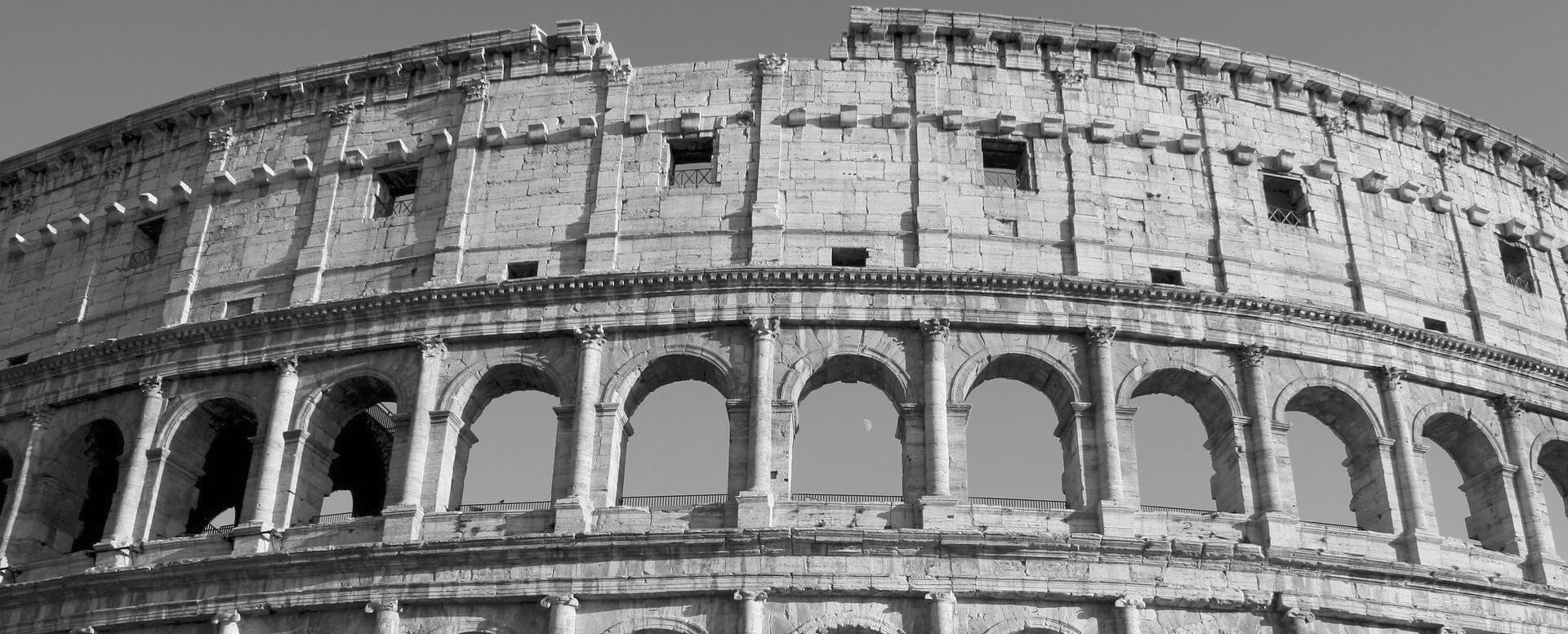Italy, a country loved by people all around the world, has a very fascinating history throughout the years that has made it into the special gem we admire today.
Around 800 BC, the Etruscans found civilisation in central Italy and began to build cities in a grid like pattern. Several of these cities still exist today including the likes of Perugia, Arezzo, Cerveteri, Cortona and Chiusi. This group of people also built roads and drained marsh land. As they were so creative and very skilled artists, they worked with bronze materials and created terracotta sculptures. On the walls of rich people’s tombs, the Etruscans painted frescoes as well as painting pieces of pottery.
The Etruscan group of people were very much influenced by the Greeks with whom most of the trading regime took place. Around the year of 750 BC, a colony on the island of Ischia in the Bay of Naples was established by the Greeks who later built colonies in Sicily and mainland Italy.
In 600 BC the Etruscans ruled central Italy, and most importantly, Rome. They built a powerful navy, but this was no match for the Romans as by 510 BC they had rebelled and slowly began to take over and the last Etruscan city was passed over in 265 BC to the Romans.
After taking over from the Etruscans in 510 BC, Rome was then ruled by two officials known as consuls who served for one year. From the very start Rome was known as a threatening and expanding state, controlling the whole of central Italy, however the Gauls arrived and captured Rome for themselves. Rome went on to be recovered and eventually by 272 BC nearly all of Southern Italy was controlled by the Romans.
The Romans then began to expand in a Northerly direction and by 90 BC Northern Italy was, too, in the hands of the Romans. The people of Rome became richer as they won more wars, capturing prisoners and using them as slaves. As the city became more and more wealthier, roads and temples started to be built and the Roman Empire enlarged.
Italy saw many emperors try and rule the country with the majority of them being assassinated. During the period between 235 and 284 there were a total of 22 emperors. Diocletian ruled between 284 and 305 and split the empire in half, the Western side and the Eastern side. Over time the two halves began to disagree and not co-operate with one another leading to economic decline. By the 5th century the Roman Empire had collapsed and in 476 the last Roman emperor ruling was dethroned and Odoacer, a German, declared himself the King of Italy.
The early middle ages saw a group of people called the Lombards invade Northern Italy in 568. Slowly over time they began to connect with the native Italians and began to adopt the customs of Italy and the Italian language. However, by the year of 772 the Franks invaded Italy, conquering the Lombard Kingdom. The leader of the Franks, Charlemagne, declared the pope the ruler of central Italy. As control passed between the Germans, the French and the Italians, the populations of the cities in the North grew quickly, but was soon interrupted by the tragic disaster of the Black Death in 1348, killing around a third of the whole population. By the end of the 14th century the country recovered and moved into a new chapter in time.
Towards the end of the 14th century and into the 15th century, art began to flourish in Italy, producing some of the greatest writers and artists of all time. By 1470, the printing press had been introduced to the city of Venice. Italian trade and commerce began to prosper and expand.
During this period of time, control passed back and forth between the French, the Spanish, the Austrians and the Italians leading Italy on a whirlwind adventure through time with several wars in the fight for control. In the 17th century Italy was hit with a long recession leading to mass poverty and a big decline in foreign trade. Rebellions took place in nearly every region causing unrest throughout the whole of Italy and regions started to become independent republics.
During the Second World War Italy remained neutral, however, under instruction by Mussolini, the country went to war with both Great Britain and France and were foolishly defeated. Furthermore Italy suffered from mass air raids and around 60% of the country’s industrial production plants were completely destroyed by bombs. After surrendering in 1943 on the 8th September, Italy was, once again, faced with the Germans who entered Rome. During May 1946 Victor Emmanuel, the King of Italy, began the reconstruction of the country, however by the 2nd June 1946, the Italians called for a republic.
In the following years Italy began to return to the right track with living standards rapidly increasing along with industry, often referred to as an ‘economic miracle’. Today the North of Italy is highly industrialised and is very much a business hub whilst the South still remains quite poor. Wine has become an important export, but tourism continues to remain the most profitable as the country sees millions of visitors each year.
